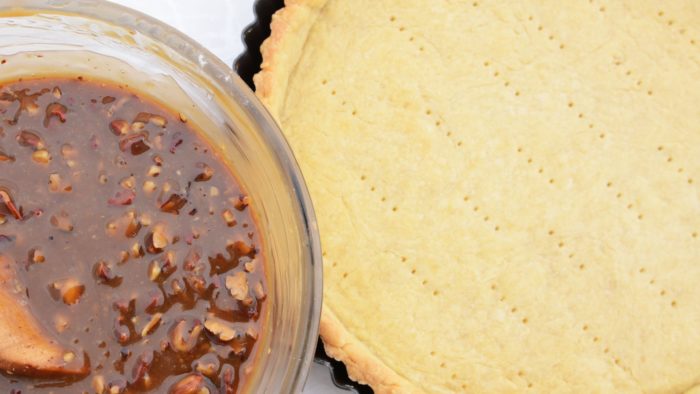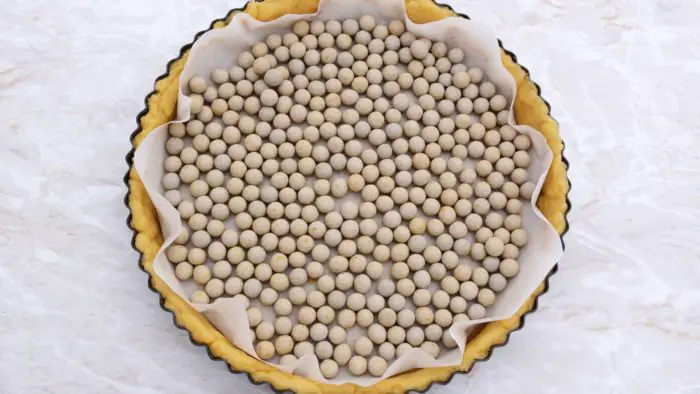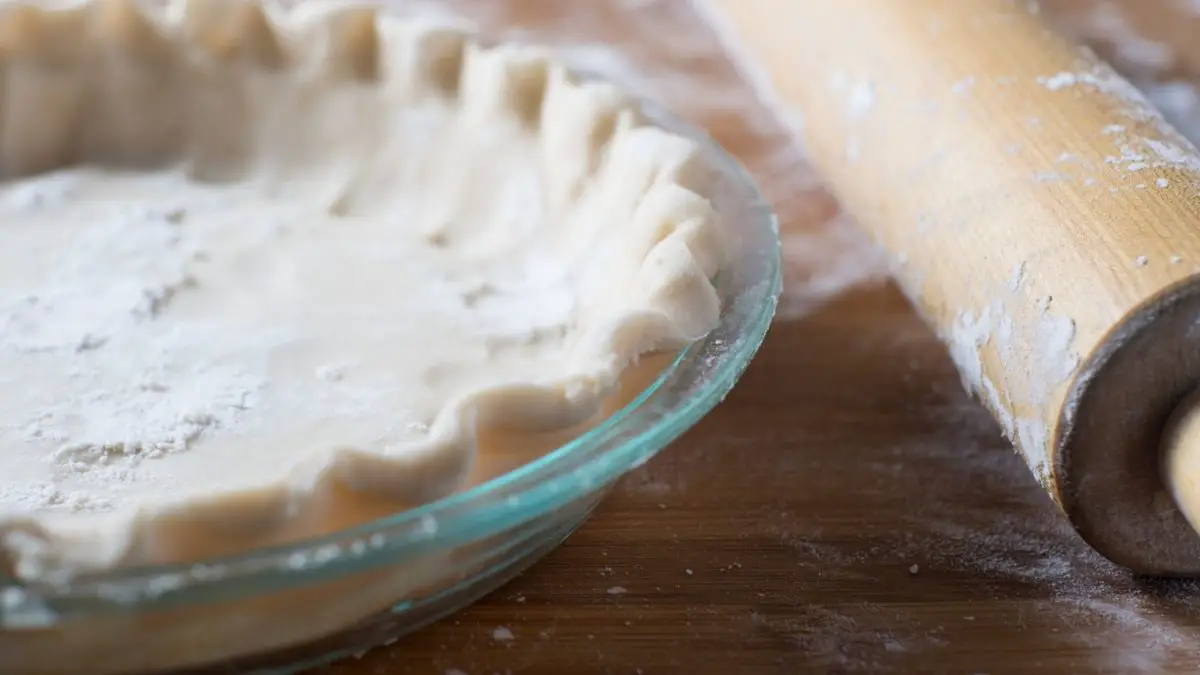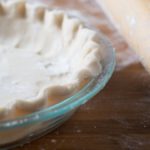Last Updated on February 19, 2023
If you’re struggling with soggy crusts, then this is for you! We will be looking at exactly how to keep pie crust from getting soggy in one 1 additional step.
Now, we know that pies already take quite some time to make. But even though this step may not be quick, it is well worth the extra effort!
Characteristics of a Good Pie Crust
There are few things worse than a pie crust that just doesn’t meet the standards. And you instantly know when it isn’t a good crust! While there are very few qualities we can mention that make a crust good, there are loads that can make it worse!
The best pie crusts are those that are somewhat crispy with a beautiful golden brown color. The color should also be very even throughout the crust. This is a direct indication of how the crust has been baked. An uneven color means that the crust has baked unevenly.
Furthermore, the edges should be slightly darker as compared to the rest of the pie crust. The bottom is usually only a light brown color. This is completely normal and will anyway not be visible if you don’t like the more pale color.
When it comes to the mouthfeel of these crusts, most pie crust recipes aim to create a crisp, flaky, and tender texture. This is what helps support an often smooth, firm, and creamy filling.
And finally, a perfectly baked pie crust is flat. It shouldn’t have any bubbles forming or cracked areas. This beautiful surface is achieved using a few basic techniques.
Why Does a Pie Crust Go Soggy?
To understand how to prevent a soggy pie crust, you first need to identify exactly why your crust went soggy in the first place.
The most common reason for a soggy pie crust is that the crust wasn’t blind-baked. This is a technique that ensures the crust creates a barrier between the rest of the dough and the moist filling. If you don’t blind-bake your crust, then it is bound to become soggy!
There are other less common reasons, such as incorrect recipe ratios and exceptionally moist fillings, but blind-baking the dough will even help those problems too.

How to Keep Pie Crust From Getting Soggy
The ultimate solution how to prevent a soggy pie crust is blind-baking the pie dough. This single additional step will eliminate most causes of a soggy crust and give you the ultimate pie that you worked so hard on.
Blind baking consists of two parts. The first is lining the pie dish with your dough and docking it.
What docking does is help the dough bake much more evenly and eliminate any potential air pockets. You just make a bunch of indents into the dough using a fork or pastry docker.
The second part entails blind-baking the dough. During this part, you have to weigh down the dough with pastry weights. This too will help prevent air pockets and the dough from cracking.
Once partially baked, you can safely add the filling and finish off your pie.
What You Will Need: Blind-Bake Your Pie Crust
Ingredients
Equipment
- Rolling pin
- Pie dish
- Fork or pastry docker
- Baking paper
- Pie weights (or uncooked rice)
- Cooling rack
Step-by-Step Instructions
Step 1: Line Your Pie Crust With Dough
Once your dough has been made, roll it out into a uniform thin sheet. Then, line your pie dish making sure the dough reaches every corner.
Once lined, press the dough into the fluted edges. It should lift so that it reaches slightly over the edge of the pie dish.
Step 2: Dock Your Pie Dough
Next, you can use a fork to dock the bottom of the pie crust. This will ensure that the crust bakes evenly without forming air bubbles. It is a technique that has been used by professional bakers for centuries, so trust us when we say it works!
Make sure to dock the pastry. If you don’t create enough indents, the dough may still form air pockets.
Step 3: Add the Pie Weights
Once your dough has been docked, you can rest it inside the fridge for another 10 minutes. This will help solidify the butter and prevent the crust from shrinking a lot.
After it has rested again, you can add a large sheet of baking paper inside the pie dish. Make sure it completely covers the surface and reaches over the edges. This paper needs to hold all of the pie weights and will make it much easier to remove.
Then, add your pie weights to the paper.
Step 4: Partially Bake Your Pie Crust
Finally, you can place the pie crust inside a preheated oven at 320ºF (160ºC). Bake it for roughly 10-15 minutes depending on the thickness of your dough. The crust should only start turning golden brown. But it shouldn’t reach the perfect color just yet.
Step 5: Remove and Cool the Crust
After you have blind-baked your pie crust, remove it from the oven and allow it to cool completely. If you add the filling too soon, it will also add to a soggy crust.

Tips and Tricks
- After the pastry crust has been blind-baked, you can add some egg wash to give it the best color. Remove the pie weights after the initial baking time has elapsed. Then, brush the dough with egg wash and allow it to bake for another 5 minutes. This will help give the crust a beautiful color.
- For pie weights, you don’t have to go buy special equipment. You can also use uncooked rice, beans, or granulated sugar. Just remember that you cannot use the rice and beans after it has baked in the oven. The sugar will have caramelized slightly but is still safe to use.
- If you have a very wet filling, make sure to drain it as much as you possibly can. This is crucial if you are using frozen fillings.
- You can even use thickening agents to help remove any excess juices or liquids from your filling.
How to Keep Pie Crust From Getting Soggy in a Fruit Pie
There are many ways to keep your pie crust from getting soggy in a fruit pie. Let’s take a look at some of the best options.
- Keep It Low. When it comes to baking your pie crust, you should ensure that you use the bottom rack of the oven. This will help the pie crust to firm up and get that golden brown crispiness you’re looking for. As well as this, when it’s baked on the bottom shelf of the oven, most of the heat is concentrated on the bottom of your pie, which will help prevent the soggy bottom you’re trying to avoid.
- Blind Bake. To put it simply, blind baking is ensuring that the crust is either partially or fully baked before you add the filling. The best way to do this is to use weights to weigh down the pie crust.
- Layer Your Pie. Once you have your pie crust, you can add a plain ingredient such as breadcrumbs, or cereal between the layer of pie filling and your crust. This will create a barrier and help prevent a soggy bottom!
- Use Egg Wash. Beat an egg white only and then lightly brush your pie crust with the egg wash. This will also help the fruit filling from making your pie crust soggy.
- Thickness. Try making a thicker crust for the bottom of your pie crust. It may take slightly longer to bake, but it shouldn’t be soggy!
There are many other ways you can prevent your pie crust from getting soggy, but these are the options that I find best effective.
How to Keep Pumpkin Pie Crust From Getting Soggy
When it comes to keeping pumpkin pie crust from getting soggy, you can follow the same steps above to achieve the perfect pie crust. From making a thicker bottom crust, using egg wash or blind-baking; there are many ways to do this.
What Does Undercooked Pie Crust Look Like?
If you’re wondering what undercooked pie crust looks like, then look no further. It will be pale in color, there may be white spots on the crust and you may have a soggy bottom. If your pie crust has any of these signs, it’s likely to be undercooked.
How to Decorate Pie Crust
Decorating a pie crust is super easy, and besides crimping, there are a few easy ways to do this. Let’s take a closer look.
- Use a Fork. You can either make crosses with your fork or simply just press on the edges of your crust lightly to make a beautiful pattern.
- Use Cookie Cutters. If you have any dough leftover from your pie, use a cookie cutter to make some fancy designs to add to the top of your pie, or the edges of your pie. You should be able to stick them onto the pie with a brush of water.
- Use Scissors. Make cuts along the edges and ensure you overlap every two cuts to create a pattern.
- Use a Spoon. Instead of a fork, simply use a spoon instead to make an indent. The pattern will still be pretty, and just as easy to do.
Wrapping It Up
It is amazing that how to keep pie crust from getting soggy only really requires one additional step. Sure, it will take up a little more time. But, the price is worth paying for the ultimate crisp golden-brown crust!
We hope that you have enjoyed this article and look forward to seeing what you think in the comments below!
Read more about What To Do With Pie Crusts?
How to Keep Pie Crust From Getting Soggy: 1 Easy Solution
Equipment
- Rolling Pin
- Pie dish
- Fork or pastry docker
- Baking paper
- Pie weights (or uncooked rice)
- Cooling Rack
Ingredients
- Pie dough
Instructions
- Once your dough has been made, roll it out into a uniform thin sheet. Then, line your pie dish making sure the dough reached into every corner.Once lined, press the dough into the fluted edges. It should lift so that it reaches slightly over the edge of the pie dish.Pie dough
- Next, you can use a fork to dock the bottom of the pie crust. This will ensure that the crust bakes evenly without forming air bubbles. It is a technique that has been used by professional bakers for centuries, so trust us when we say it works!Make sure to dock the pastry. If you don't create enough indents, the dough may still form air pockets.
- Once your dough has been docked, you can rest it inside the fridge for another 10 minutes. This will help solidify the butter and prevent the crust from shrinking a lot.After it has rested again, you can add a large sheet of baking paper inside the pie dish. Make sure it completely covers the surface and reaches over the edges. This paper needs to hold all of the pie weights and will make it much easier to remove.Then, add your pie weights inside the paper.
- Finally, you can place the pie crust inside a preheated oven at 320ºF (160ºC). Bake it for roughly 10-15 minutes depending on the thickness of your dough. The crust should only start turning golden brown. But it shouldn't reach the perfect color just yet.
- After you have blind-baked your pie crust, remove it from the oven and allow it to cool completely. If you add the filling too soon, it will also add to a soggy crust.
Notes
FAQs
Why is my pie crust soggy after baking?
The number one reason that a pie crust goes soggy is that the crust hasn't been partially baked. This allows the wet filling to make the raw dough soggy and prevent it from becoming crisp in the oven.
How do you keep the bottom crust of apple pie from getting soggy?
The best way to keep the base of your apple pie crust crisp is to blind bake the pastry. First, dock the crust with a fork or pastry docker. Then, allow it to rest so that the butter solidifies. And finally, ass some pie weights and partially bake the crust for roughly 10-15 minutes.
Can you eat soggy pie crust?
You can eat soggy pie crust, as long as it isn't raw or undercooked. Even then it is safe to eat, but it can upset your stomach a little. Not to mention, it will be outright unappealing.
How do I make my bottom pie crust crispy?
The best way to get your pie crust to be crispy (all parts of it) is to blind bake it. This technique allows you to first partially bake the pie crust before adding your filling. by doing so, you have created a barrier that will protect the crust from becoming soggy from the filling.

Lindy Van Schalkwyk is a culinary specialist with a background in Advanced Cooking, Advanced Pâtisserie, Media Communications and Nutrition. She has gained invaluable experience in the culinary industry having worked in some of the top restaurants in Africa in 2016 and 2017. Her expertise in nutrition has enabled her to develop recipes for special dietary needs. In 2018, Lindy began working in the Food Media industry, focusing on recipe development, recipe writing, food writing and food styling.



